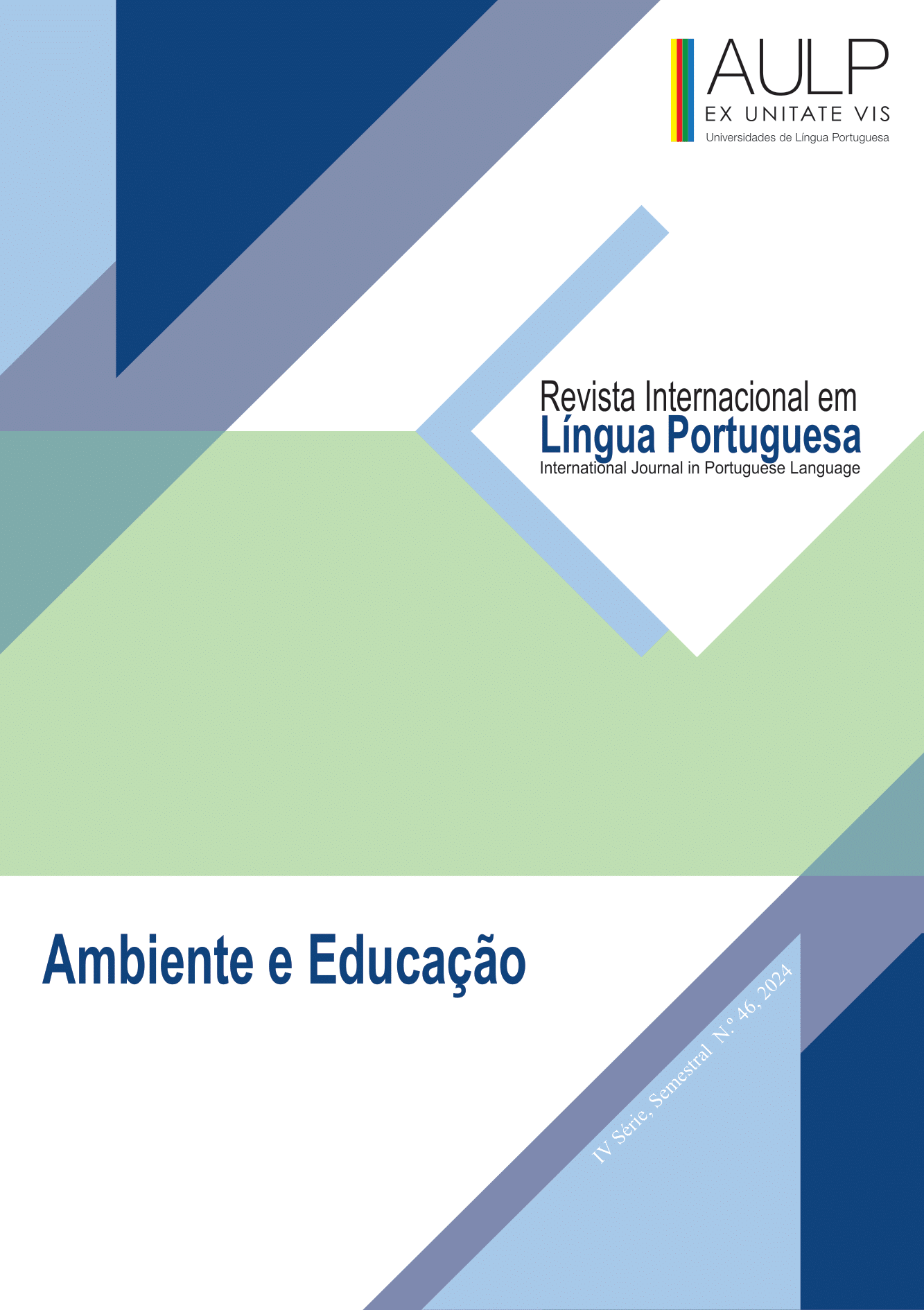Reflexões sobre o turismo urbano na África Subsaariana
##plugins.themes.bootstrap3.article.main##
Keywords
África Subsaariana, Turismo, Cidades, Turismo urbano
Resumo
As relações entre o turismo e a cidade são históricas e complexas. Desde o início do século XX, o turismo tem sido considerado um impulsionador do desenvolvimento urbano. O espaço urbano é, por excelência, um território propício ao encontro social e cultural.
Muitas cidades da África Subsaariana possuem uma vasta riqueza de recursos naturais e culturais. No entanto, o potencial dessas cidades para o desenvolvimento do turismo urbano permanece amplamente inexplorado. O objetivo deste estudo é analisar os principais desafios para o desenvolvimento do turismo urbano nas cidades da África Subsaariana.
Para tal, foi conduzido um estudo exploratório, baseado na revisão bibliográfica de livros, artigos científicos e relatórios relevantes. Argumenta-se que os principais desafios incluem a ausência de políticas públicas concretas e realistas, o limitado envolvimento da comunidade local no planeamento das atividades turísticas, a falta de segurança e as dificuldades de acesso a serviços básicos, como água e saneamento.
Embora tenham sido implementadas iniciativas para superar esses obstáculos, tais ações frequentemente seguem uma lógica neoliberal, beneficiando as elites em detrimento das populações urbanas mais vulneráveis.
Referências
Ashworth, G., & Page, S. J. (2011). Urban tourism research: Recent progress and current paradoxes. Tourism Management, 32(1), 1-15. https://doi.org/10.1016/j.tourman.2010.02.002
Brito-Henriques, E. (2003). A cidade, destino de turismo. Revista Da Faculdade de Letras, XIX, 163-172.
Castrogiovanni, C. (2013). Turismo, organização e reconstrução do espaço urbano contemporâneo. Revista Rosa dos Ventos, 5(3), 381-389. Retirado de http://www.redalyc.org/articulo.oa?id=473547094002
Costa, C., & Albuquerque, H. (2017). Um Novo Modelo Conceptual Para o Turismo Urbano. In F. Silva & J. Umbelino (Coords.), Planeamento e Desenvolvimento Turístico. Lídel Edições Técnicas.
Fotio, H. K., Adams, S., Nkengfack, H., & Poumie, B. (2023). Achieving sustainable development goal 7 in Africa: Does globalization matter for electricity access, renewable energy consumption, and energy efficiency? Utilities Policy, 82, 101545. https://doi.org/10.1016/j.jup.2023.101545
Jedwab, R., Christiaensen, L., & Gindelsky, M. (2017). Demography, urbanization and development: Rural push, urban pull and urban push? Journal of Urban Economics, 98, 6-16. https://doi.org/10.1016/j.jue.2015.09.002
Lall, S. V., Henderson, J. V., & Venables, A. J. (2017). Africa’s cities: Opening doors to the world. World Bank Publications. Retirado de http://hdl.handle.net/10986/25896
Mbaiwa, J. E., Toteng, E. N., & Moswete, N. (2007). Problems and prospects for the development of urban tourism in Gaborone and Maun, Botswana. Development Southern Africa, 24(5), 725-740. https://doi.org/10.1080/03768350701650793
Manjengwa, J., Matema, C., & Tirivanhu, D. (2016). Understanding urban poverty in two high-density suburbs of Harare, Zimbabwe. Development Southern Africa, 33(1), 23-38. https://doi.org/10.1080/0376835X.2015.1116376
Matiza, T. (2023). Post-COVID-19 Domestic Tourism-Led Recovery: The Paradox of Sub-Saharan African tourism. In A. Anne, S. Sabrina, M. Peet, & P. Albert (Eds.), Towards sustainable and resilient tourism futures (pp. 225-245). Erich Schmidt Verlag GmbH & Co. KG, Berlin. https://doi.org/10.37307/b.978-3-503-21195-1.13
Musavengane, R., Siakwah, P., & Leonard, L. (2020). The nexus between tourism and urban risk: Towards inclusive, safe, resilient and sustainable outdoor tourism in African cities. Journal of Outdoor Recreation and Tourism, 29, 100254. https://doi.org/10.1016/j.jort.2019.100254
Musavengane, R., Siakwah, P., & Leonard, L. (2021, November). Spotlighting Sustainability: Urban Tourism in Sub-Saharan Africa. Centre for Strategic and International Studies. Retirado de https://www.csis.org/analysis/spotlighting-sustainability-urban-tourism-sub-saharan-africa
Nakamura, S., Harati, R., Lall, S. V., Dikhanov, Y., Hamadeh, N., Oliver, W., & Yamanaka, M. (2016). Is living in African cities expensive? World Bank Policy Research Working Paper, 7641. Retirado de https://ssrn.com/abstract=2765252
Novelli, M. (2015). Tourism and development in Sub-Saharan Africa: Current issues and local realities. Routledge. https://doi.org/10.4324/9780203069325
Osinubi, T. T., Osinubi, O. B., Tabash, M. I., Ajayi, A. O., & Tran, D. K. (2021). The Impact of Corruption on Tourism Sector in Nigeria: Empirical Insights by Using an Autoregressive Distributed Lag Bounds (ARDL) Testing Approach. International Journal of Hospitality & Tourism Administration, 23(6), 1125-1144. https://doi.org/10.1080/15256480.2021.1905583
Pearce, D. G. (2001). An integrative framework for urban tourism research. Annals of Tourism Research, 28(4), 926-946. https://doi.org/10.1016/S0160-7383(00)00082-7
Rogerson, C. M. (2002). Urban tourism in the developing world: The case of Johannesburg. Development Southern Africa, 19(1), 169-190. https://doi.org/10.1080/03768350220123927
Rogerson, C. M. (2011). Urban tourism and regional tourists: Shopping in Johannesburg, South Africa. Tijdschrift Voor Economische En Sociale Geografie, 102(3), 316-330. https://doi.org/10.1111/j.1467-9663.2011.00666.x
Rogerson, C. M. (2012). Urban tourism, economic regeneration and inclusion: Evidence from South Africa. Local Economy, 28(2), 188-202. https://doi.org/10.1177/0269094212463789
Rogerson, C. M., & Rogerson, J. M. (2021). Africa’s Capital Cities: Tourism Research in Search of Capitalness. African Journal of Hospitality, Tourism and Leisure, 10(1), 654-629. https://doi.org/10.46222/ajhtl.19770720-124
Saraiva, L. E. (2019). O Espaço da África Subsaariana. Retirado de https://comum.rcaap.pt/bitstream/10400.26/32228/5/SARAIVALuisEduardo_Oespa%C3%A7oda%C3%81fricaSubsaariana_ND_151_p_101_118.pdf
Saghir, J., & Santoro, J. (2018). Urbanisation in sub-Saharan Africa: Meeting challenges by bridging stakeholders. Centre for Strategic and International Studies. Retirado de https://www.csis.org/analysis/urbanization-sub-saharan-africa
Santos, S. R. dos. (2016). Revisitando conceitos sobre políticas públicas e gestão do turismo em cidades. Revista de Turismo Contemporâneo, 4(2), 286-306. https://doi.org/10.21680/2357-8211.2016v4n2ID8709
Satterthwaite, D. (2017). The impact of urban development on risk in sub-Saharan Africa’s cities with a focus on small and intermediate urban centres. International Journal of Disaster Risk Reduction, 26, 16-23. https://doi.org/10.1016/j.ijdrr.2017.09.025
Signé, L. (2018). Africa’s tourism potential – Trends, drivers, opportunities, and strategies. Africa Growth Initiative at Brookings Institution. Retirado de https://coilink.org/20.500.12592/91t9zx
United Nations World Tourism Organization. (2011). International Tourism Highlights, 2011 Edition, UNWTO. https://www.e-unwto.org/doi/book/10.18111/9789284413935
United Nations World Tourism Organization. (2021). International Tourism Highlights, 2020 Edition, UNWTO, Madrid. https://doi.org/10.18111/9789284422456
United Nations World Tourism Organization. (2023). International Tourism Highlights, 2023 Edition – The impact of COVID-19 on tourism (2020-2022), October 2023, UNWTO, Madrid. https://doi.org/10.18111/9789284424986
Wei, C. R., Fan, C., Rizwan, M., Lang’at, G. C., & Peter, M. B. (2024). The pandemic and Africa: a review of the psychological, social, and nutritional impact of COVID-19 in Africa. International Journal of Community Medicine and Public Health, 11(1), 566. https://dx.doi.org/10.18203/2394-6040.ijcmph202
World Bank. (2020). Africa’s Pulse: Charting the road to recovery (Vol. 22, Issue October). Retirado de https://openknowledge.worldbank.org/bitstream/handle/10986/34587/9781464816482.pdf?sequence=20&isAllowed=y


